I went to the seaside.
In February.
What can I say? It’s as close as staid old age gets to rebellion. I can’t ride a Harley with a horned helmet, so I go to the sea in February. And no, I didn’t go in. I mean: I’m rebellious, but I’m not suicidal.
I was there to meet some of the birdlife that uses Britain as its temporary home. A surprising amount of wildlife does. Many flying species we think of as ‘British’are either not British at all, or are topped up by foreigners stopping off for a meal and a drink before their next flight is called. We don’t own these species, we merely borrow them for a while. And the area around Portsmouth is teeming with them. With increasing evidence that many bird and animal species have regional dialects in their songs and call, these gatherings of travelling companions must seem very much like our own airports, a polyglot collection of strangers, all brought together by a location. And in this case, they are all there because of mud.
I arrived at Farlington marshes, to the East of the city, at high tide. It was my kind of sea – a flat calm, with barely a ripple of water against the sea wall. It wasn’t much of a sea wall, either. Sandwiched between Portsmouth and Hayling island is an area, the size of Portsmouth harbour itself, which has just a few narrow connections to the sea, calming the waters. At the north, a small spit of marshland juts out into the bay, surrounded by a shallow, sloping sea wall just a few feet high. On the seaward side of the wall is a shallow-watered bay. On the other side of the wall and a gravel bank lie Farlington marshes. Fed by a few small streams, it’s a mix of rough grassland, bramble scrub, and reed-lined pools and scrapes. When I arrived, it was high tide and the sea extended for miles, holding a mirror up to a surprisingly sunny blue sky. Were it not for a wind cold enough to make your eyes run, it could have been summer. The water rippled slightly, and out in the bay, small spits of gravel seemed to ripple with it. Only with binoculars did the truth reveal itself: the spits were indeed alive with birds, jammed so closely together that the analogy continued: they looked like airport lounges when all the flights had been cancelled. I could just make out curlew, lapwing, bar-tailed godwit, grey plover and ringer plover and a half-dozen other species that I needed a book to reliably identify, all jammed together. Now and then, something would startle them and the smaller, more restless birds would take to the air and then resettle; or another flight would land from somewhere, bringing an influx of new tourists, unrecognisable at that distance, to try and find a space on the already-heaving terminal floor.
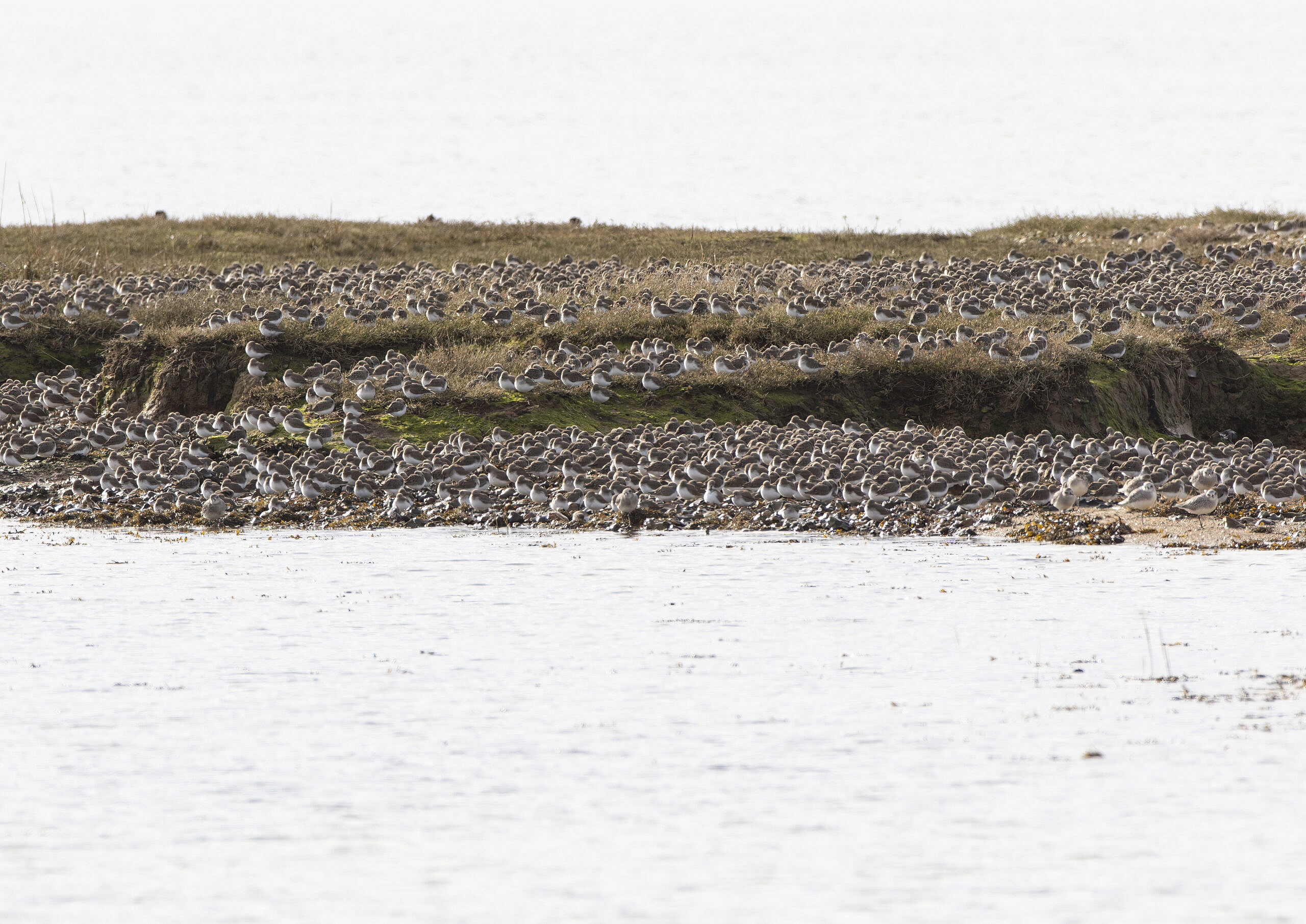
A swirling column of black-headed gulls was the only moving thing out on the waters, but as I watched, their reason for being there revealed itself. We so often associated gulls with rubbish heaps and stolen chips that we forget they still have their innate nature as fish-eaters. In this case, they were dropping to the surface to catch a small shoal of fish. But they weren’t alone. porpoising beneath them, arcing down into the water in a travelling group, was a group of a duck. A fish-eating duck. The goosander isn’t widely known, but it is one of two ducks we have in the UK that belong to the ‘sawbills’, named for their long, toothed bills. So at home in the sea and chasing fish are they that, given a few million more years of evolution, goosander may well evolve into a group of feathered, plesiosaur-like animals. The dopping (I had to look that collective noun up) of goosander ploughed the bay, accompanied by their retinue of attendant gulls, like ancient royalty surrounded by courtiers.
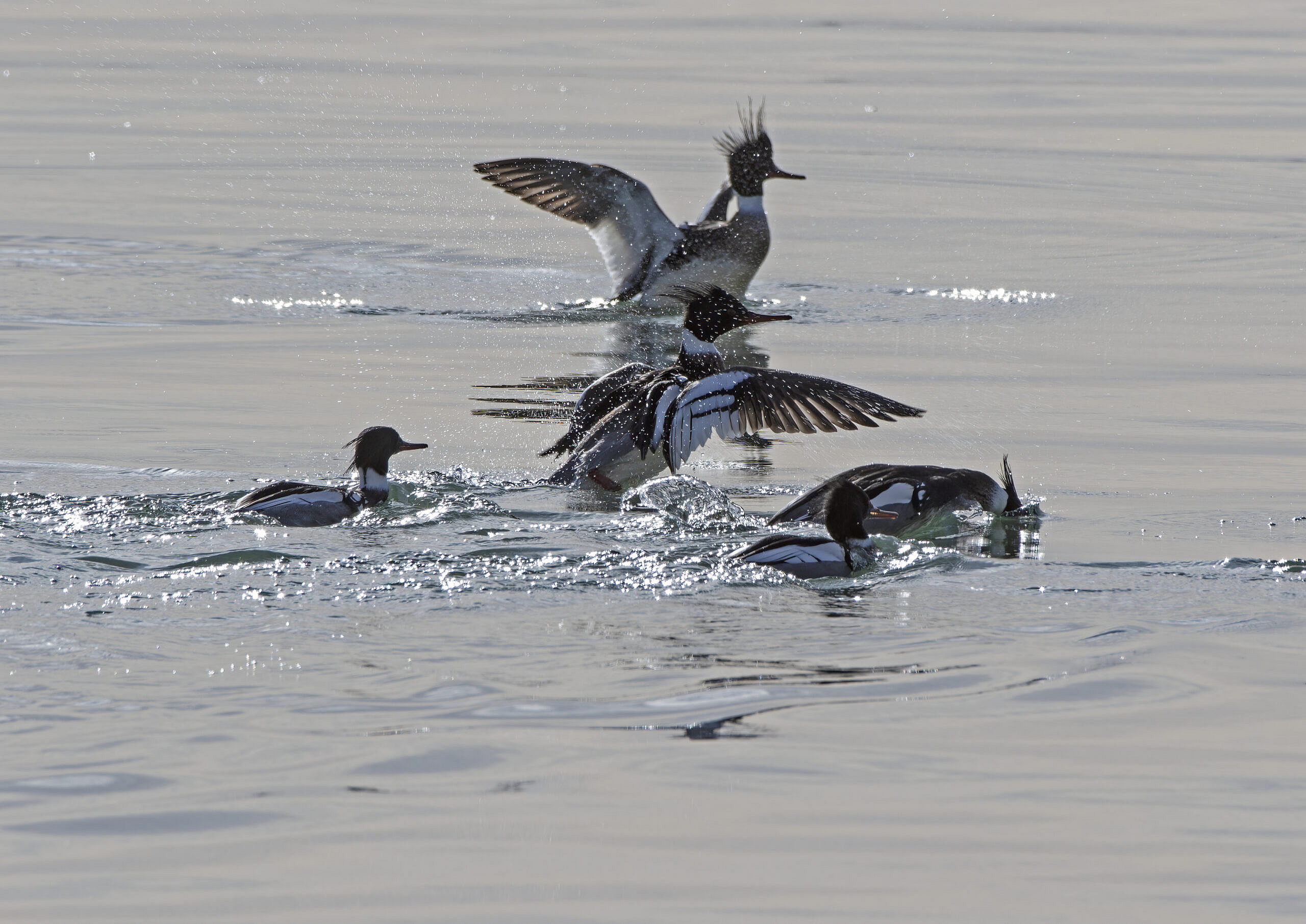
On the landward side, the reedbeds exploded. Here there were ‘normal’ ducks – mallard, teal, and wigeon. They scattered in terror as a marsh harrier, a large raptor that is a marshland specialist, sideslipped over the top of a stand of reeds that had hidden its approach, and tried to grab one.
But it wasn’t the goosander or the marsh harrier I’d come to Farlington to see. The marshes and their surrounding area are home to hundreds, possibly thousands, of Brent geese. Around 90,000 of these geese migrate to the UK every winter to escape the brutal cold of their Siberian nesting grounds. Smaller than our familiar honking greylag goose, these geese have beautiful, black velvet heads and necks. They come in two common forms, the pale-bellied and the dark-bellied, although in truth they could be called ‘dark’ and ‘darker’, and are a coastal specialits. Nearer to my home county of Wiltshire, a Brent goose would be a rarity, something to cause a stir amongst birders. Here there were hundreds comfortably grazing. Global warming brings us a double whammy here: we’re not just losing the birds that live here all year around, but many of our tourist species are no longer coming. Why fly hundreds or thousands of miles if it’s staying sunny and warm closer to home? Just as Margate may one day be just as pleasant as Malaga, so our numbers of migrant birds are steadily dropping.
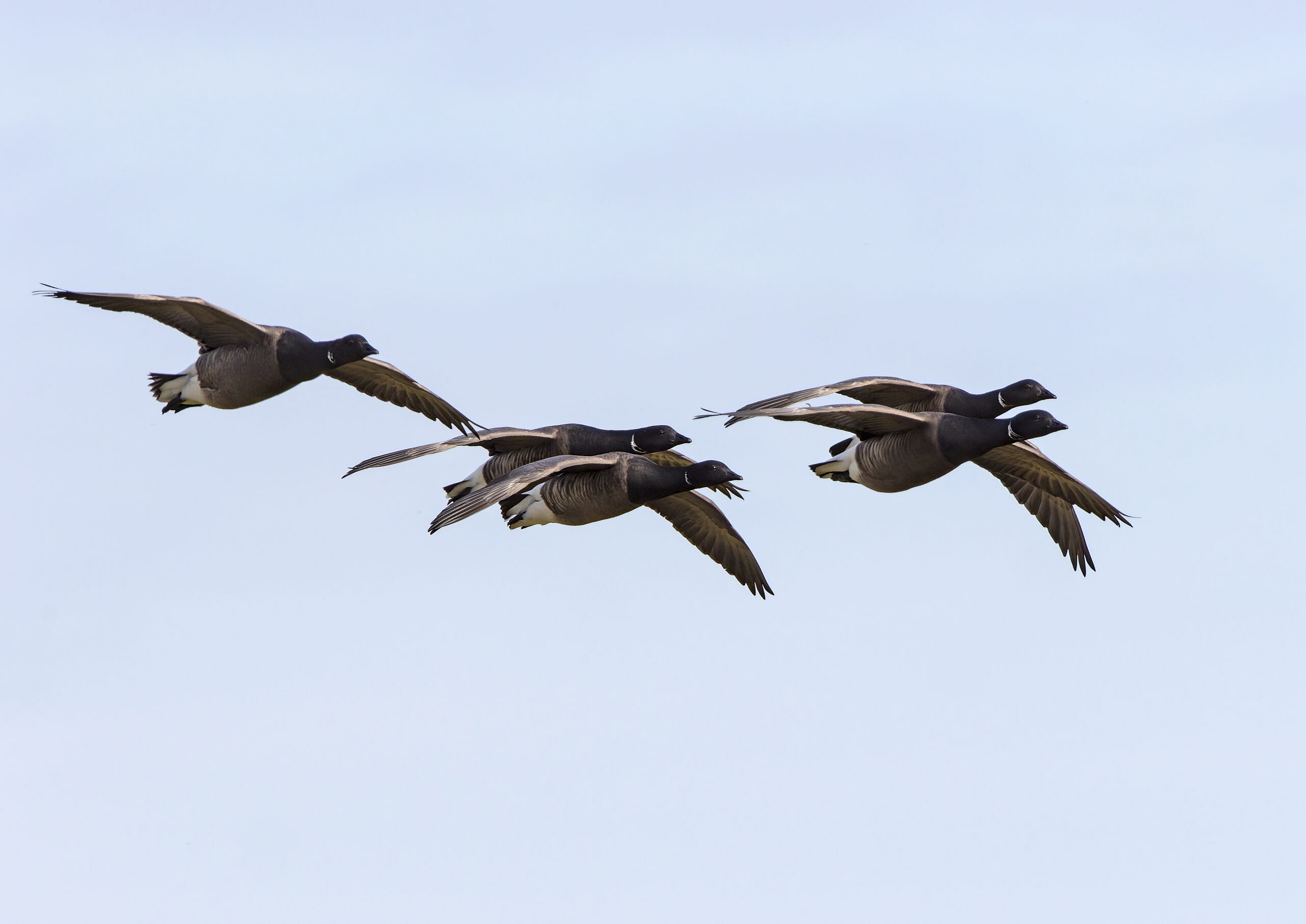
But for now at least, there was no shortage here. I watched the Brent geese and the other wildlife of the marshes for hours. Short-eared owls and a Dartford Warbler, always a tricky bird to see, kept me entertained.
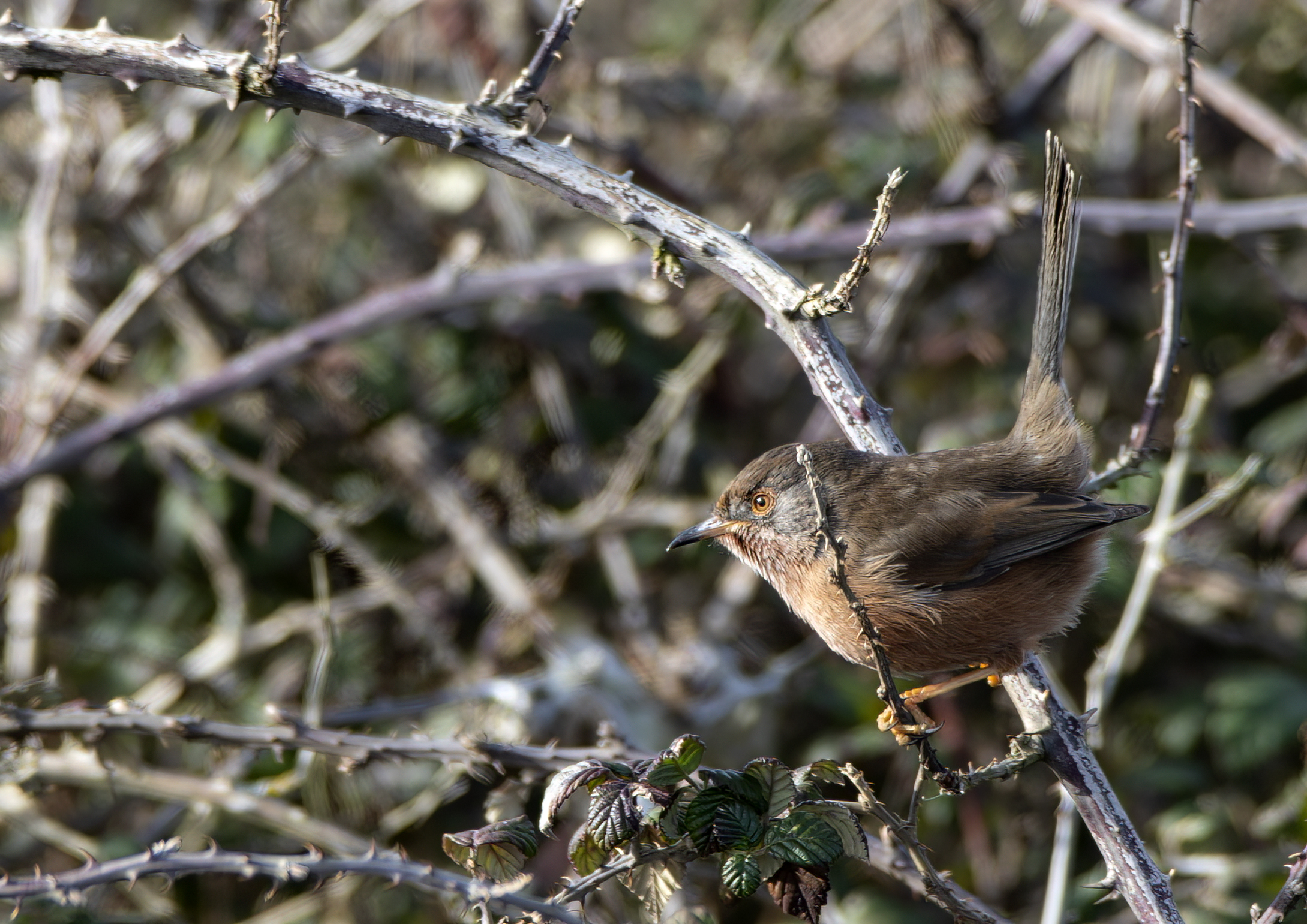
But when I turned around, I realised that someone had pulled the plug out. The bay, probably no more than a dozen feet deep for the most part, was emptying so quickly that you could see the water inching away. The gravel spits were emptying, and flock after flock of birds spead out onto the exposed mud.
Now mud has a problem in the UK. People gaze at it and see wasted space. It can’t be farmed. But it can be drained and farmed. And so for centuries, areas like Farlington marshes and the mudflats beyond have been blocked and drained. I suspect it is only the military value of nearby Portsmouth harbour that stopped that happening at Farlington, too. Britain has lost 75% of its wetlands, as usual making us one of the world’s worst destroyers of this habitat. But it’s a habitat with immense wildlife value.
Some years ago I stood on a hill in Kenya and watched as a million wildebeest grazed the vast plain of the Masai Mara. Here was another vast plain, of mud dotted with wading birds of every size and shape. It’s said that a cubic metre of estuary mud has the same food energy as a chocolate bar, from all the inverterbrates within it. The restaurant had opened its doors. It was dinner time at the airport, and all of the tourists were filing up.
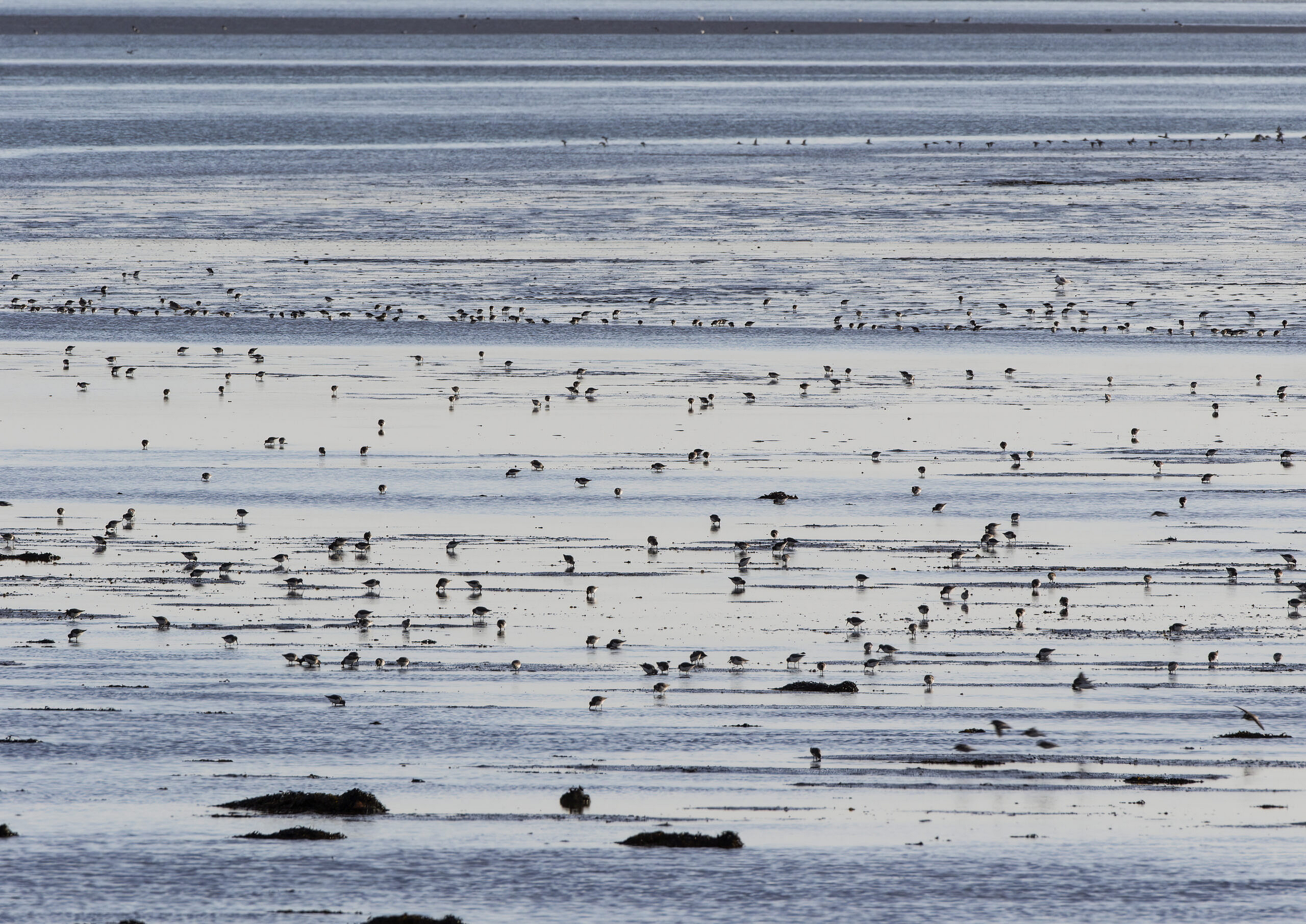
As the sun dropped and took the temperature with it, a lone curlew ambled across the mudflat, as if between the aisles of a supermarket, choosing a tidbit here and there, deftly tugging a hapless worm up. In a few hours it would be forced off the mudflats by the rising tide. But for now the long, slow, daily breath of the sea had taken, and for a short time, it was giving back.
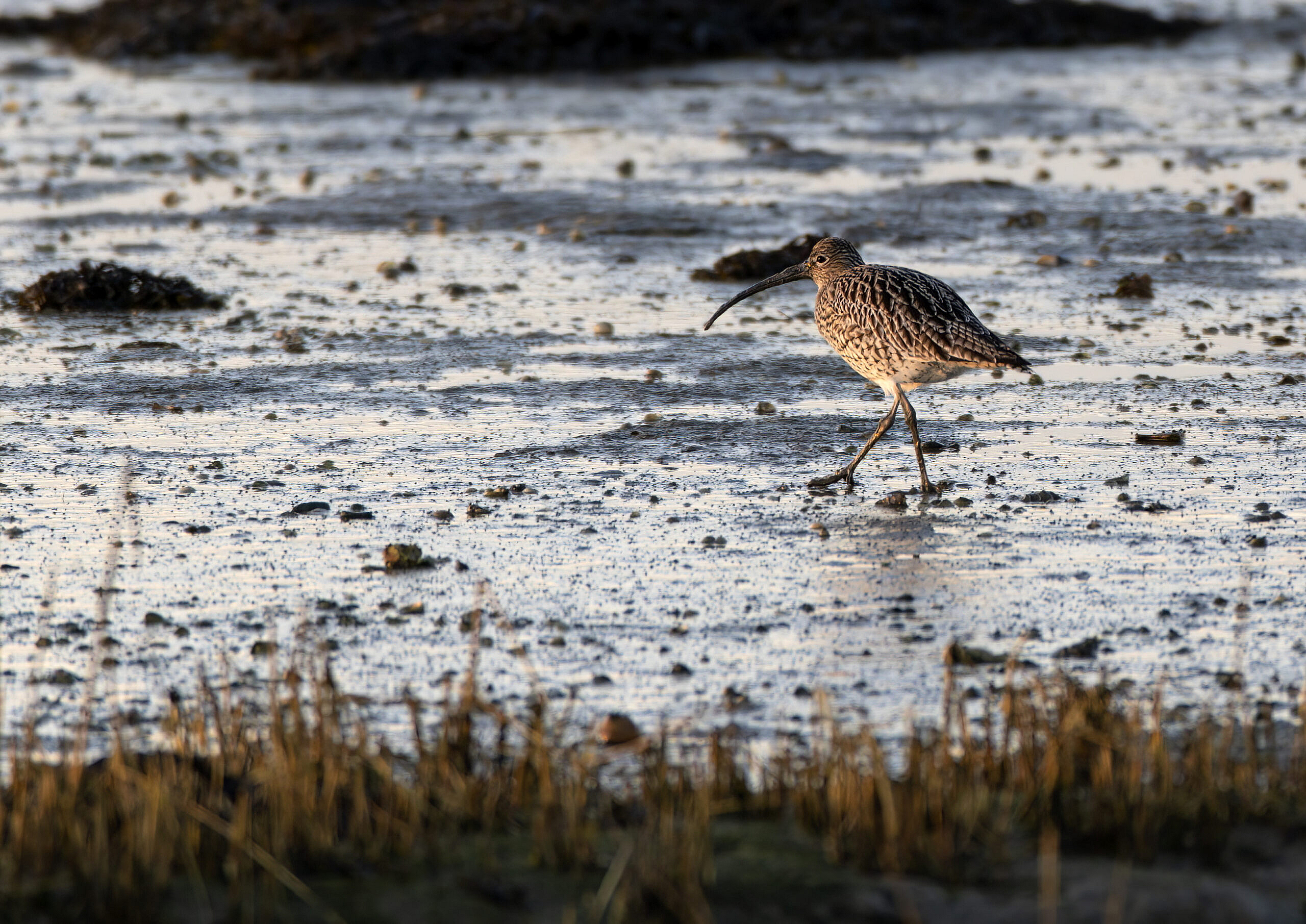
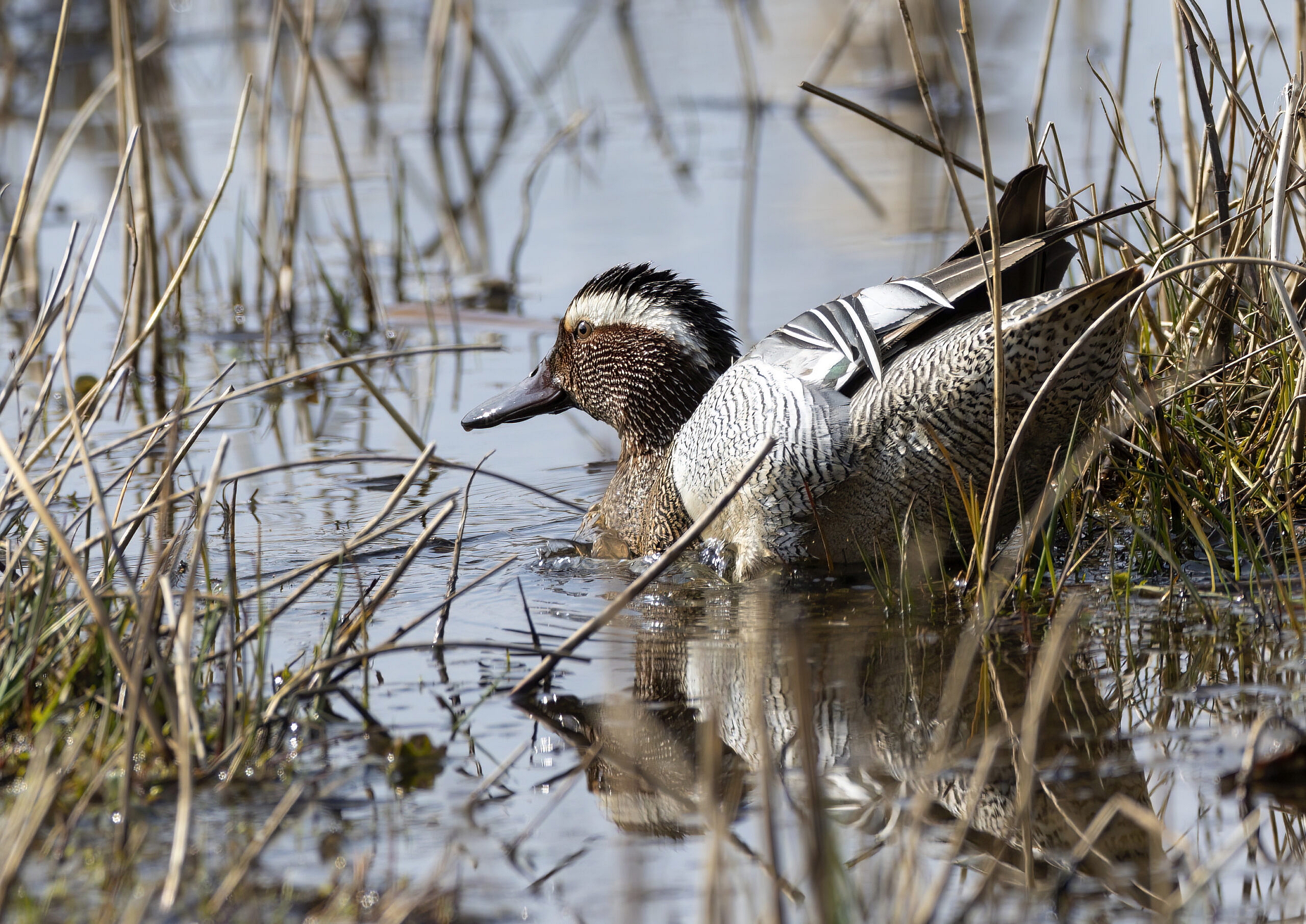
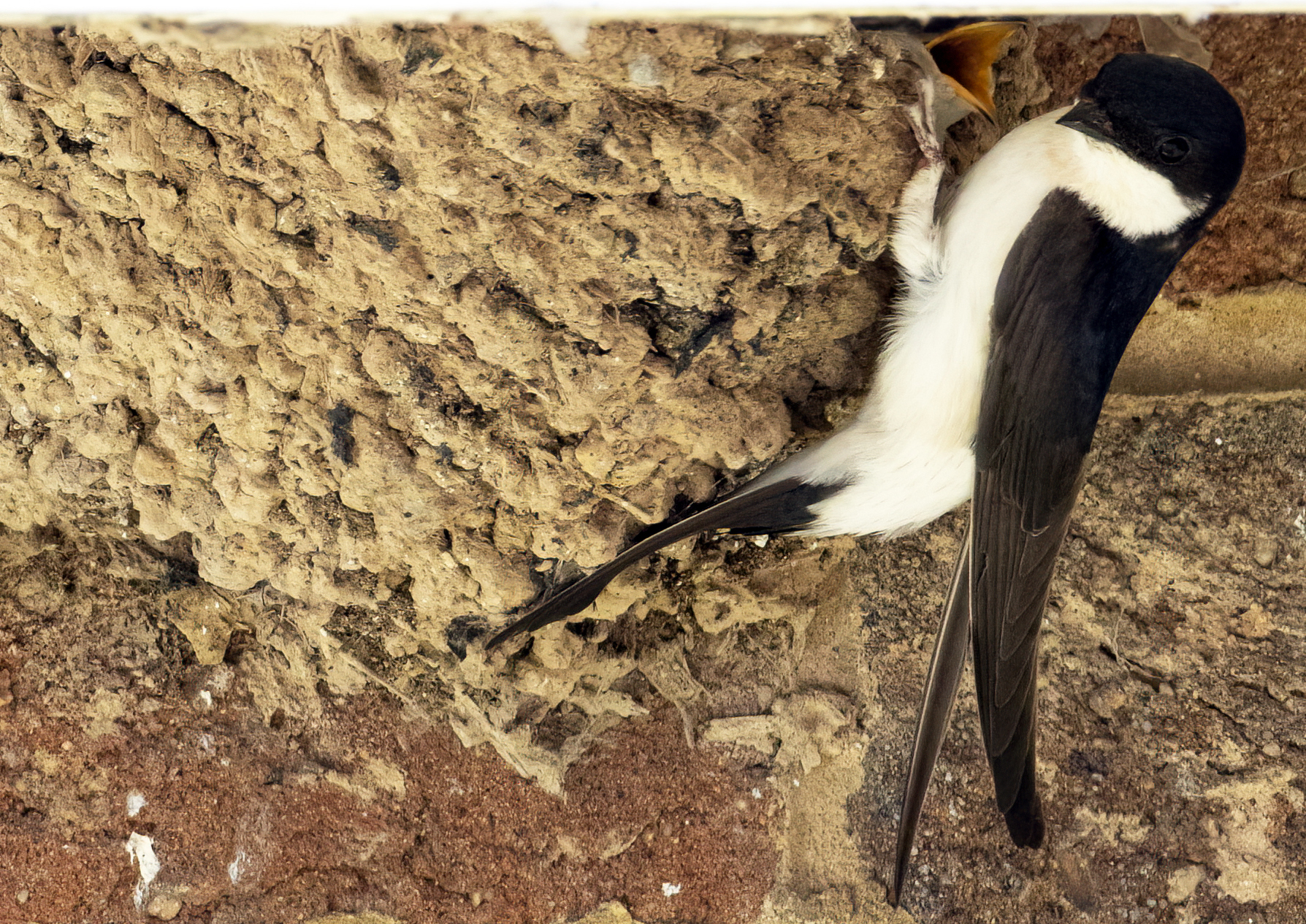
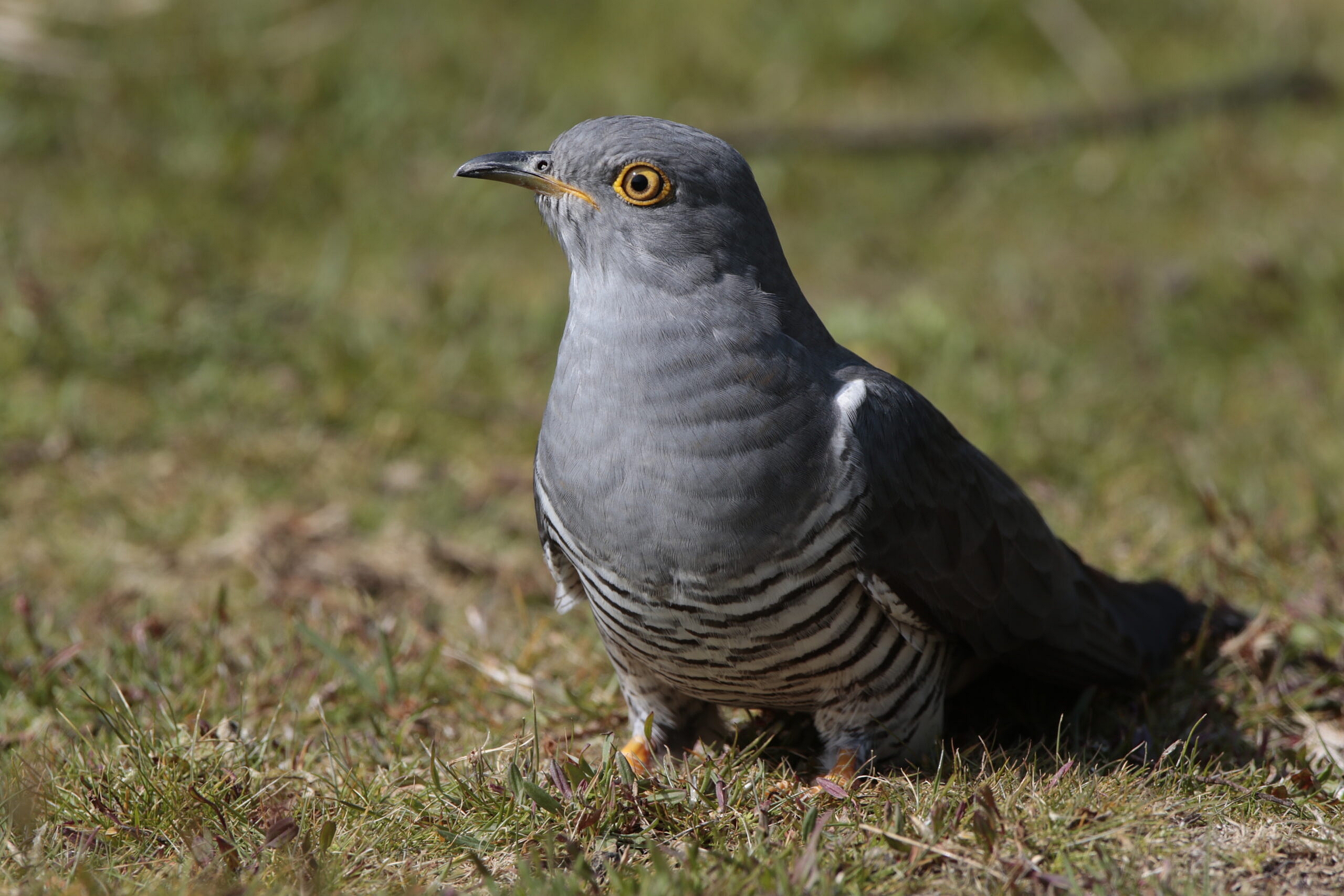

1 comments On The daily breath
Pingback: Talk a walk on the wild side - Steve Deeley ()
Comments are closed.